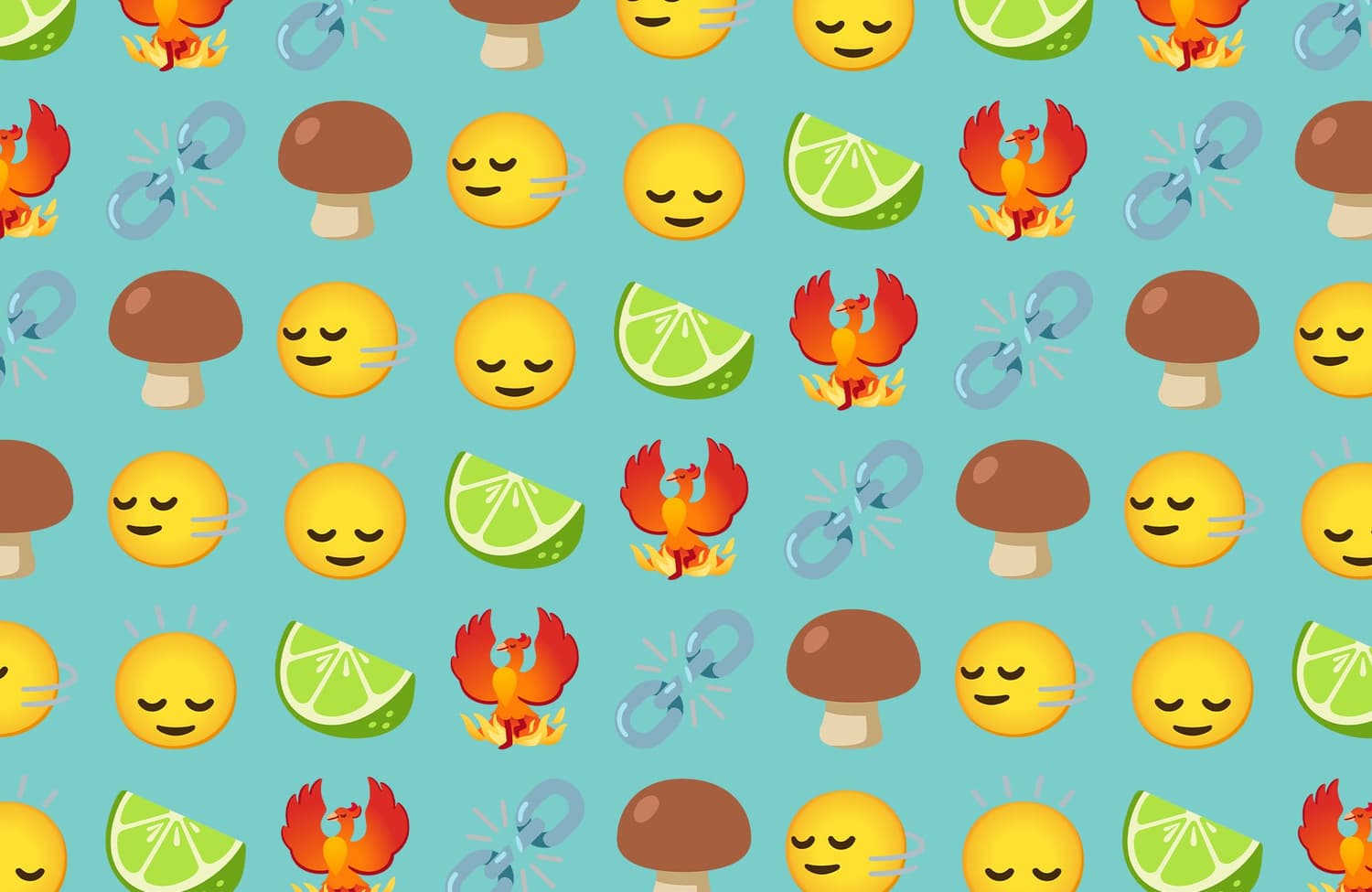FAQ
🙋 How many emoji characters are there?
👉 In total there are 3,782 emojis in the Unicode Standard, as of September 2023. The most recent emoji release is Emoji 15.1, which added 118 new emojis.
This figure includes sequences for gender, skin tone, flags, and the components that are used to create keycap, flag, and other sequences. More emoji statistics.
🙋 Emoji or emojis? What is the correct plural of emoji?
👉 In Japanese, the plural version of emoji is emoji.
In written English, Merriam-Webster and Dictionary.com note that emoji and emojis are both commonly used as acceptable plurals of the word “emoji”.
While words are not given plural forms in Japanese, this may or may not be observed when borrowing a Japanese word such as emoji, to use in English.
An article about emoji pluralization in The New York Observer states that the Associated Press Stylebook “took a firm stand and opted for emojis” in March of 2013. However, the Associated Press updated its guidelines in 2018 to use "emoji" for the plural.
Mark Allen, a board member of the American Copy Editors Society, stated that “emojis is the better English plural” for emoji:
When words enter English, we usually make them play by our rules, so I think ’emojis’ has the edge,” Mr. Allen said in an email. “A corollary might be the Japanese word ‘tsunami.’ We’re more likely to speak of ‘a series of tsunamis’ rather than ‘a series of tsunami.’”
Emojipedia uses emojis as the plural of emoji for clarity.
🙋 Who writes the definitions for Emojipedia?
Jane Solomon is the Senior Emoji Lexicographer at Emojipedia, responsible for researching emoji meanings and writing the Emojipedia emoji definitions. More about the Emojipedia team.
🙋 Emoticon, smiley, emoji, what’s the difference?
👉 Emoticons and smileys are often used to describe small face-like icons available in instant message services and messaging apps.
Apps that includes emoticons and smileys are not always compatible with each, as the options and meanings available may not be the same on each platform.
Emoji is a standardised set of characters that is available on iOS, Android, Windows and macOS. While the artwork for each emoji character varies by platform, the meaning of each symbol remains the same.
🙋 Can I make my own emoji?
👉 This is not possible. If you create a character on your phone or computer that looks like an emoji symbol, you can send this is an image to others, but not as an emoji which is treated like text.
🙋 How do I get the new emojis?
👉 The Unicode Standard is updated on an ongoing basis, and new emojis are rolled out to platforms by platform vendors (such as Apple, Google, Microsoft and Samsung), or app vendors (such as Facebook, Twitter, and WhatsApp).
Updating to the latest version of an app or operating system is the most common way to get new emojis, when support is added by a vendor.
🙋 Why don’t emoji designs look the same on all platforms?
👉 The appearance of each emoji varies by platform, as the artwork is specific to which fonts are included on the system.
🙋 Does my operating system support emojis?
👉 All modern operating systems support emoji characters. Input methods and fonts vary, but basic support for emoji display is now widespread. View compatibility.
🙋 How did the emojis get their names?
👉 The initial proposal to standardize emoji characters into Unicode was a joint submission by Apple and Google. The names chosen in this document were revised by the Unicode Consortium for the release of Unicode 6.0.
Many emojis have two names: a Unicode character name; and a short (CLDR) name. CLDR names are localized, and may remove obscure language used in the original character names. Emojipedia displays both names on emoji pages; but uses the CLDR name for lists and headings.
Emoji Sequences and ZWJ Sequences don't have a character name, as these are comprised of multiple emojis. As such, these only have a CLDR name.
Learn more about terms used in character names such as Black, Heavy, or CJK.
Latest news
Show more
iOS 17.4 Emoji Changelog
Today Apple has released its latest emoji update, introducing 118 new emojis including a phoenix, a lime, several gender-neutral family designs, and v...

First Look: New Emojis in iOS 17.4
New emojis have arrived on iOS as part of the first iOS 17.4 beta. The new additions include a phoenix, a lime, smileys shaking their heads up and dow...

Google's Emoji 15.1 Support In Noto Color Emoji
Today Google has officially unveiled its full-color designs for Unicode's latest approved emojis, which include a phoenix, a lime, smileys shaking the...



